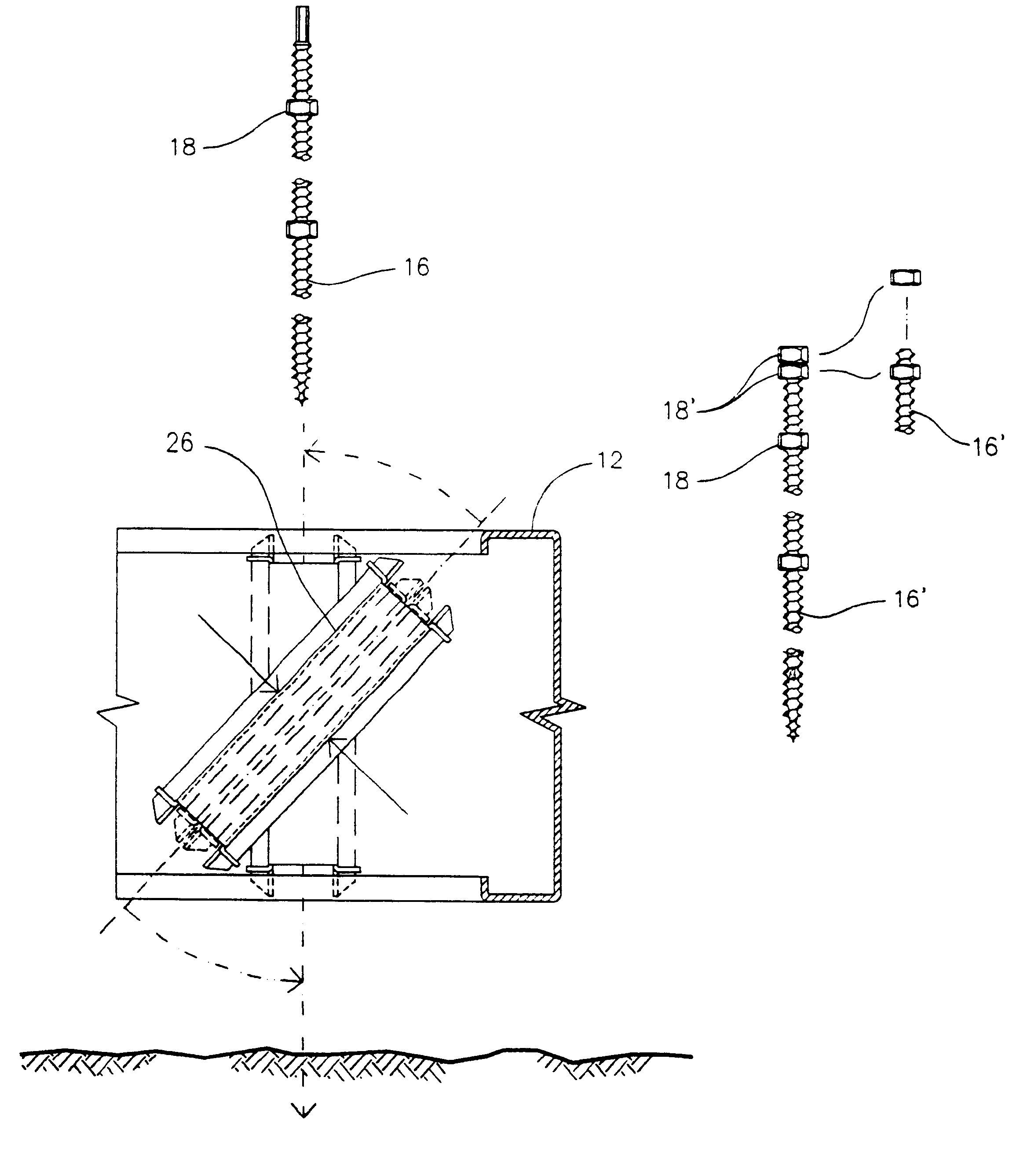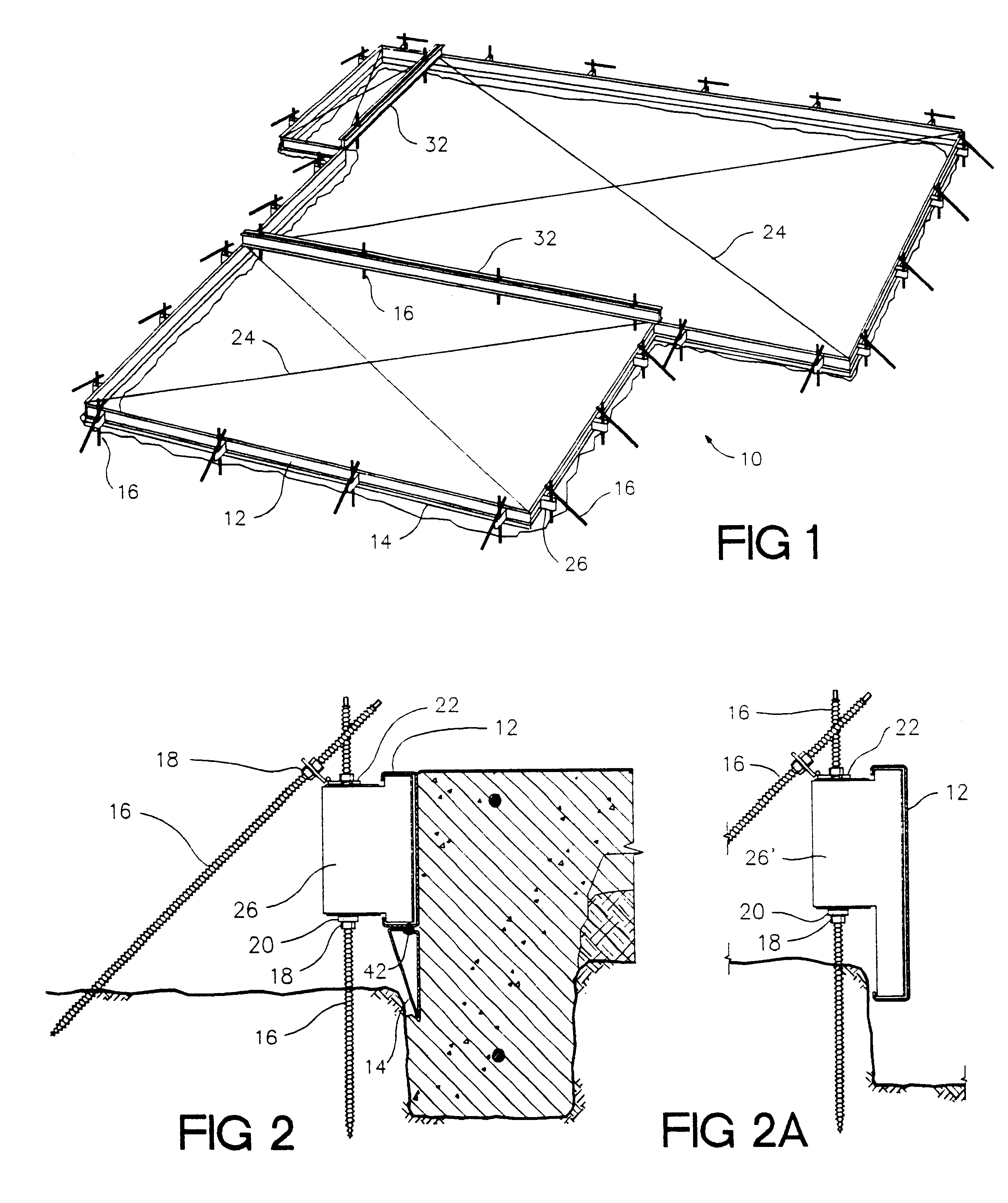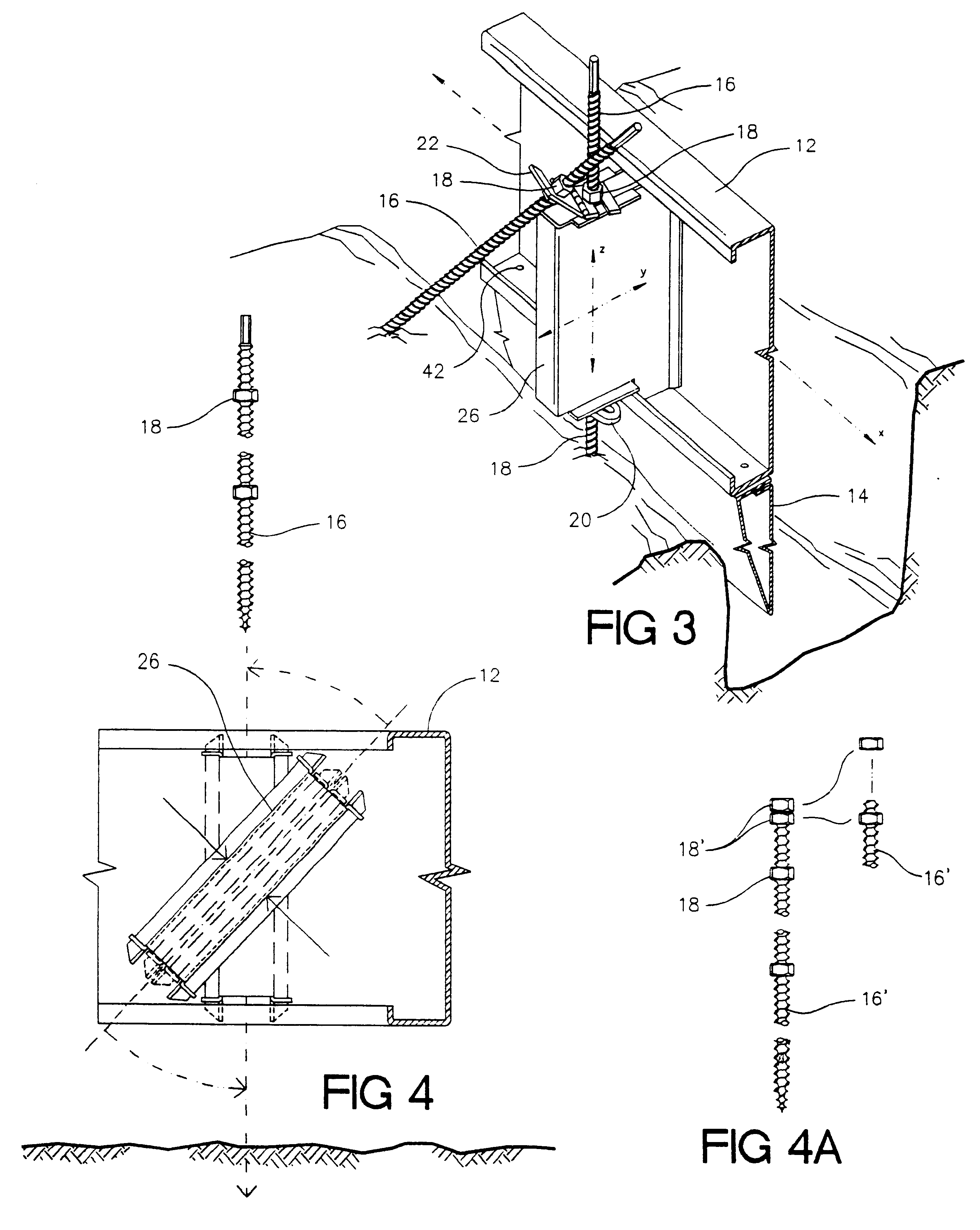Versatile threaded construction stake usable to anchor and/or support construction forms, including concrete slab foundation forming devices
a construction stake and thread technology, applied in the direction of threaded fasteners, screws, ways, etc., can solve the problems of limited commercial success of contemporary proprietary systems which form concrete slabs on grades, inflexible, and high cost of proprietary systems
- Summary
- Abstract
- Description
- Claims
- Application Information
AI Technical Summary
Benefits of technology
Problems solved by technology
Method used
Image
Examples
Embodiment Construction
of a Stake for Use in Construction
The present invention is embodied in a stake generally suitable for use in construction of buildings upon the face of the earth. The preferred embodiment of a construction stake of the present invention consists of an elongate threaded metal member having (i) a length between 0.45 meter and 1.8 meter, (ii) a tapered (pointed) first end region that is suitable to penetrate the earth under force of screwing the member into the earth, and (iii) a second end region in the shape of a regular prism.
The prism-shaped second end region is suitable to be engaged and to be rotated, turning the entire elongate threaded member by a rotating tool which may be manual but which is most commonly a power tool, normally of the pneumatic impact wrench or electric drill type. Particularly by use of a power torquing tool the threaded stakes may be easily driven and strongly set into even the hardest earth. (The stakes are not for use in solid rock, but may easily bypass ...
PUM
 Login to View More
Login to View More Abstract
Description
Claims
Application Information
 Login to View More
Login to View More - R&D
- Intellectual Property
- Life Sciences
- Materials
- Tech Scout
- Unparalleled Data Quality
- Higher Quality Content
- 60% Fewer Hallucinations
Browse by: Latest US Patents, China's latest patents, Technical Efficacy Thesaurus, Application Domain, Technology Topic, Popular Technical Reports.
© 2025 PatSnap. All rights reserved.Legal|Privacy policy|Modern Slavery Act Transparency Statement|Sitemap|About US| Contact US: help@patsnap.com



